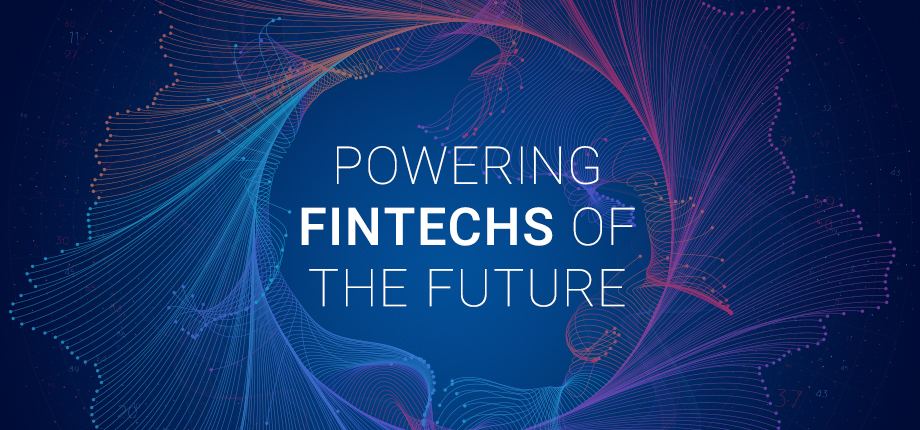Credit Lending

Fintechs have been an enormously disruptive force of change in financial services over the past 10 years. From digital payments, lending, insurance, digital banks, to personal finance and many other subsectors in between, fintechs have rapidly transformed everything from business and operating models to customer expectations. It’s this innovative drive that is celebrated and fostered each year at LendIt Fintech - a conference that brings together the fintech and financial services community to connect and reimagine the future of finance. And there may not be another year on record that called for the reimagining of finance more than 2020. Last year, the financial services industry – from consumers, fintechs and other subdivisions across the globe – endured many changes and challenges due to the COVID-19 pandemic. But it also brought accelerated innovations; and with them, increased customer expectations and a focus on financial equity and inclusion. As consumer credit scores and demand for credit continue to rise, fintechs have an opportunity to re-examine what credit looks like in a post-COVID lending environment, and explore opportunities for growth in 2021. Experian’s Chief Product Officer Greg Wright tackled this topic at the recent Lendit Fintech conference, alongside Ibo Dusi of Happy Money, Myles Reaz of Upgrade and the Garry Reeder with the American Fintech Council. Watch the full panel discussion in the video below and hear more about: How panelists define data, alternative data and how it factors in their lending How alternative data can help drive financial inclusion and get to a ‘yes’ more often with consumers Using data to make the consumer experience more frictionless and seamless For more information about how Experian can help fintech organizations of all sizes reach their business and lending goals, visit our fintech solutions page. Explore Experian's Fintech Solutions

For credit unions of all sizes, choosing a strategic partner with the right tools, capabilities, and industry expertise to support growth while minimizing expenses is a decision critical to the bottom line. This is especially important, since the goal of achieving sustainable growth has continued to be a trending topic for credit unions since the start of the pandemic. According to this CU Times analysis of NCUA data, the fourth quarter of 2020 showed that high overhead per assets was the main factor holding down net income, and credit unions with less than $1 billion in assets fared the worst. These high overhead costs kept margins low and served to be a key contributing factor in gauging a credit union’s profitability. Overcoming this problem lies not only in improving operational efficiency, but in seeking out partners that can provide innovative insight and “right-sized,” scalable solutions to help credit unions effectively grow at a strategic pace. The less money a credit union spends earning each dollar, the more operationally efficient and resource-savvy it becomes—which in turn generates more value for both the credit union and its members. So how can a credit union successfully assess a potential partner’s ability to help them achieve goals for sustainable growth? Asking three key questions can reveal a potential partner’s operational prowess and their ability to understand and offer the right solutions tailored for an individual credit union’s need. Minimize Overhead with a Partner Who Can Help Accelerate and Support Sustainable Growth: Evaluation Questions to Ask 1. Does my potential partner offer solutions to ease the strain on staff, or help automate time-consuming, repetitive tasks and processes? Automation is not only for large credit unions. Employees at credit unions with $4 billion and less in assets often wear many hats and manage the full spectrum of credit activities, leaving leaders to ponder how much time staff is spending on rote, manual tasks throughout the end-to-end member lifecycle. As a result, credit unions are turning to automated decisioning to streamline repetitive tasks and meet increasing member expectations, while also reducing risk. To drive sustainable growth, credit unions will want to look at current processes as a means of measuring efficiency. Can existing programs handle growth to scale in all areas of the business? How can digital lending automation be increased and free up more time for staff to focus attention where it is needed most, such as high-value engagements with members and delivering a personalized member experience? Can self-service tools save your credit union valuable time and increase employee satisfaction? 2. Does my potential partner have access to the right data, advanced analytics and technology to help optimize credit decisioning? As credit unions consider different ways to minimize overhead and accelerate growth, the last few years have shown that automation, coupled with advanced analytics and technology, has taken on a second wave of focus and intense interest. A significant opportunity pertaining to automation is supporting decisioning throughout the member lifecycle, again, eliminating the need for manual processes that cannibalize time and resources. For example, access to advanced analytics and data at the onset of account acquisition can quickly inform a lender as to whether a new account should be approved or declined. Furthermore, it also presents an opportunity to lend deeper. Credit unions can leverage expanded datasets to perform an analysis on rejected applicants and make more predictive decisions – leading to incremental loans. Additionally, lenders have identified other areas where automated decisioning could speed up processes that once required manual evaluation – from account and portfolio management, to marketing and prescreening efforts, to managing early and late-stage delinquent accounts. By leveraging a partner who can support optimizing credit decisioning with the freshest data and analytics, credit unions can routinely and consistently be sure they’re making the right offers and decisions to the right customer at the right time. 3. Does my potential partner offer digital-first strategies and solutions that help reduce friction and improve the member experience? More and more members are interacting and engaging with their credit unions via digital channels. To meet their demands, credit unions – who have historically prioritized other initiatives over digital transformation– are quickly pivoting and rethinking their digital strategy to offer best-in-class digital banking and borrowing experiences, while also reducing friction. Part of this strategy includes smart, easy and well-designed applications that support sustainable growth simply by streamlining offers and reducing abandonment. When considering a potential partner, take into consideration their ability to assist with digital-first solutions, including: Real-time income and employment verification, and fraud tools to quickly and accurately confirm important factors, including the legitimacy of members, and streamline the borrowing process with minimal friction. Instant prescreen, self-service prequalification and instant credit to offer fast, easy, and convenient real-time credit decisions for members. Additionally, improving lending economics with a digital-first pre-qualification tool can not only better serve members, but also drive more apps and grow loans. Artificial intelligence, machine learning and other innovative technologies to enhance underwriting and decrease both hard inquiries on applications and the need for extensive underwriter review. Prequalification tools powered by innovative technology solutions can lead to efficient use of underwriter resources and act as a filter in front of the LOS to remove unqualified applications from hard inquiries. Technology that integrates with multiple lending and core systems and delivers solutions that integrate with multiple systems and channels. For example, to help improve conversion, the borrower experience can be offered a simple application that is designed to “get to offer” as fast as possible. This helps reduce abandonment. The process can be further streamlined by integrating data sources for ID verification, auto fill assistance and adding integrations with existing lending and core systems. To learn more about Experian and how our solutions can support and grow your credit union, contact us now. Contact Us

To grow in today’s economic climate and beat the competition, financial institutions need to update their acquisition and cross-sell strategies. By doing so, they are able to drive up conversions, minimize risk, and ultimately connect consumers with the right offers at the right time. Businesses and consumers are spending more time online than ever before, with 40% of consumers increasing the number of businesses they visit online. They’ve also made it clear that they expect easy, frictionless transactions with their providers. This includes new accounts and offers of credit – creating the need for better delivery systems. Effective targeting and conversion come down to more than just direct mail and email subject lines, especially now in a volatile economy where consumers are seeking appropriate products for their current situation. Be the first to meet consumers’ needs by leveraging the freshest data, advanced analytics, and automated decision systems. For example, when a consumer tries to open a checking account, the system can initiate a “behind-the-scenes” real-time prescreen request while assessing information needed to open the deposit account. The financial institution can then see if the consumer qualifies for overdraft protection, refinancing offers, loans, credit cards, and more. By performing the pre-approval process in seconds, financial institutions can be sure that they're making the right offers to the right customer, and doing it at the right time. All of this helps to increase the offer acceptance rate, improving customer retention, and maximizing customer account life-time value. The pandemic upended a lot of the ways that your businesses run day-to-day – from where you work to how you (better) engage with customers. Arguably, some of the changes have been long overdue, particularly the acceleration to digital and better customer acquisition strategies. Ahead lies the opportunity to grow – strategies enacted now will determine the extent of that opportunity. To learn more about how Experian can help you assess your prescreen strategy and grow, contact us today. Request a call

In today’s digital-first environment, fraud threats are growing in sophistication and scope. It’s critical for credit unions to not only understand the specific threats presented by life online, but to also be prepared with a solid fraud detection and prevention plan. Below, we’ve outlined a few fraud trends that credit unions should be aware of and prepared to address. 2021 Trends to Watch: Digitization and the Movement to Life Online Trend #1: Digital Acceleration As we look ahead to the rest of 2021 and beyond, we expect to see adoption of digital strategies nearing the top of credit unions’ list of priorities. Members’ expectations for their digital experience have permanently shifted, and many credit unions now have members using online channels who traditionally wouldn’t have. This has led to a change in the types of fraud we see as online activities increased in volume. Trend #2: First-Party Fraud is On the Rise First party fraud is on the rise – 43% of financial executives say that mule activity is up 10% or more compared to attack rates prior to the pandemic, according to Trace Fooshee, Senior Analyst for Aite Group, and we expect to see this number grow. The ability for credit unions to identify and segregate the “good guys” from “bad guys” is getting more difficult to discern and this detail is more important than ever as credit unions work to create frictionless digital experiences by using digital tools and strategies. Trend #3: Continual Uptick in Synthetic Identity Fraud We expect synthetic identity fraud (SID) to continue to rise in 2021 as cybercriminals become more sophisticated in the digital space and as members continue with their new digital habits. Additionally, fraudsters can use SIDs to bring significant damage and loss to credit unions through fraudulent checks, debit cards, person-to-person and automated clearing house (ACH) transactions. More and more, fraudsters are seen opening accounts and remaining very patient – using an account to build and nurture a trusted relationship with the credit union and then remain dormant for two years before ensuing in any sort of abuse. Once the fraudster feels confident that they can bypass authentication processes or avoid a new product vetting, oftentimes, they will take that opportunity to get easy access to all solutions credit unions have available and will abuse them all at once. There are no signs of fraud slowing, so credit unions will need to stay vigilant in their fraud protection and prevention plans. We’ve outlined a few tips for credit unions to help protect member data while reducing risk. The Fight Against Fraud: Four Key Tips Tip #1: Manage Each Fraud Type Appropriately Preventing and detecting fraud requires a multi-level solution. This can involve new methods for authenticating current and prospective members, as well as incorporating synthetic identity services and identity proofing throughout the member lifecycle. For example, credit unions should consider taking extra verification steps during the account opening process as a preventative measure to minimize SID infiltration and associated fraud losses. As credit unions continue down the path of digitization, it’s also important to add in digital signals and behavior-based verification, such as information about the device a consumer is logging in from to heighten defenses against bad actors. Tip #2: Be Resourceful In the wake of the COVID-19 pandemic, many have asked, “How should credit unions approach fraud prevention tactics when in-person contact is limited or unavailable?” In some cases, you might need to be willing to say no to requests or get creative and find other options. Sometimes, it takes leveraging current resources and using what’s readily available to allow for a binary decision tree. For example, if you’re suspicious of a dormant account that you think could be synthetic, call them, and ask yourself these questions: Did they answer? Was the phone still active? Send the account holder an email – did you get a reply? Is this a new member? Is this a new channel for the member? Could they have logged on to do this instead of calling the call center? Tip #3: Empower Members Through Education Members like to know that their credit unions are taking the necessary steps and applying the right measures to keep their data secure. While members might not want every detail, they do want to know that the security measures are there. Require the use of strong passwords, step-up authentication, and empower members with alerts, notifications, and card controls. Additionally, protect members by providing resources like trainings, webinars, and best practices articles, where they can learn about current cyber trends and how to protect their data. Tip #4: Trust Data Many credit unions rely on an employee’s decision to decide when to take action and what action to take. The challenge with this approach comes when the credit union needs to reduce friction for members or tighten controls to prevent fraud, because it’s extremely hard to know exactly what drove prior actions. A better alternative is to rely on scores and specific data. Tweaks to the scores or data points that drive actions allow credit unions to achieve the desired member experience and risk tolerance – just be sure to leverage internal experts help figure out those policies. By determining what conditions drive actions before the actions are taken (instead of doing it one case at a time) the decisions remain transparent and actionable. Looking for more insights around how to best position your credit union to mitigate and prevent fraud? Watch our webinar featuring experts from around the industry and key credit unions in this Fraud Insight Form hosted by CUES. Watch now Contact us

The sharp uptick in fraud that coincided with the digital evolution made it clear that banks, credit unions, and fintechs need to invest in a strategy that utilizes identity layers to keep their customers and their finances safe. The steady rise in fraud over the last several years spiked—payment fraud rose 70% last year and is expected to increase by 95% in 2021—making it more challenging than ever to address the fraud threat while meeting increasing customer expectations. The rising fraud threat 2020 saw a rapid influx of customers using digital channels and the amount of data flowing into financial systems. There’s been a seismic shift, and we’re not going back. According to a recent study, 80% of consumers now prefer to manage their finances digitally, leaving the door open for fraudsters to take advantage of digital newbies. The increase in online activity corresponded with criminal activity. The rates of synthetic identity, account opening, and account takeover fraud have risen as fraudsters’ tactics have evolved. 80% of fraud losses now come from synthetic identities In 2020 the rate of new account credit card fraud attempts rose 48% Account takeover accounted for 54% of all fraud attacks in 2020 Fraudsters will continue to take advantage of current conditions, moving from stimulus-related fraud back to more traditional forms of financial theft, and financial institutions must adapt in turn with robust identity layers. Resolving the identity threat In our recent white paper, developed in partnership with One World Identity, we explore how businesses can address the fraud threat. It requires a multilayered identity proofing strategy for both onboarding and ongoing authentication. By doing this, financial institutions can gain a holistic view of consumers and their associated risks, decreasing friction while enabling robust fraud protection. To learn more, download our “Improving Fraud by Increasing Identity Layers” white paper. Download white paper

Digitalization, also known as the process of using digital technology to provide new opportunities for revenue and growth, continues to remain a top priority for many organizations in 2021. In fact, IDC predicts that by 2024, “over 50% of all IT spending will be directly for digital transformation and innovation (up from 31% in 2018).”[1] By combining data and analytics, companies can make better and more instant decisions, meet customer expectations, and automate for greater efficiency. Advances in AI and machine learning are just a few areas where companies are shifting their spend. Download our new white paper to take a deep dive into other ongoing analytics trends that seem likely to gain even greater traction in 2021. These trends will include: Increased digitalization – Data is a company’s most valuable asset. Companies will continue utilizing the information derived from data to make better data-driven decisions. AI for credit decisioning and personalized banking – Artificial intelligence will play a bigger role in the world of lending and financial services. By using AI and custom machine learning models, lending institutions will be able to create new opportunities for a wider range of consumers. Chatbots and virtual assistants – Because customers have come to expect excellent customer services, companies will increase their usage of chatbots and virtual assistants to facilitate conversations. Cloud computing – Flexible, scalable, and cost-effective. Many organizations have already seen the benefits of migrating to the cloud – and will continue their transition in the next few years. Biometrics – Physical and behavioral biometrics have been identified as the next big step for cybersecurity. By investing in these new technologies, companies can create seamless interactions with their consumers. Download Now [1] Gens, F., Whalen, M., Carnelley, P., Carvalho, L., Chen, G., Yesner, R., . . . Wester, J. (2019, October). IDC FutureScape: Worldwide IT Industry 2020 Predictions. Retrieved January 08, 2021, from https://www.idc.com/getdoc.jsp?containerId=US45599219

For the last several months, Experian has participated as the only credit bureau in the pilot of the electronic Consent Based Social Security Number (SSN) Verification (eCBSV) service. As we move forward to general rollout and expanded availability later this year, it’s time to review the benefits of eCBSV and how it helps businesses prevent synthetic identity fraud. Service and program overview The eCBSV service combats synthetic identity fraud by comparing data provided electronically by approved financial institutions against the Social Security Administration’s (SSA) database in real time. This service helps financial institutions verify SSNs more efficiently and enables improved experiences for identifying legitimate or possibly synthetic identities applying for your products. The verification process begins with consent from the SSN holder – and with eCBSV this consent is provided electronically rather than via a wet signature. Then, the SSN is checked against the SSA database to validate the SSN, name, and date of birth combination are or are not a match. The verification will also indicate if the SSN is listed as deceased with the SSA. Together, these factors can help flag whether or not an identity is synthetic. By managing this process electronically, it is faster, more secure, and more efficient than before, offering an improved experience for consumers and the financial institutions that service them. Layering solutions While eCBSV is an excellent step forward in the fight against the rising threat of synthetic identity fraud, a layered fraud mitigation strategy is still necessary. It’s only by layering solutions that financial institutions can accurately identify different types of fraud and provide them with the correct treatment, which is especially important when it comes to rooting out fraud when it’s already embedded in a portfolio. To learn more about how Experian is helping to combat synthetic identity fraud and how eCBSV can benefit your financial institution, request a call. Request a call

According to Experian’s latest Global Insights Report, 38% of consumers expect to increase their online activity in the next 12 months. The report also found that consumers continue to have high expectations for their online experience, and businesses are re-imagining the customer journey to reflect that need. This January, Experian surveyed 3,000 consumers and 900 businesses to explore the changes in consumer behavior and business strategy pre- and post-COVID-19. As consumers have embraced life online, they’ve continued to emphasize their feelings regarding the importance of protecting their information. More than half of consumers still consider security to be the most important factor in their digital experience – the same experience they have such high expectations of. Business are acting in turn, with more than half investing in fraud detection methods or software to reduce friction in the customer experience. Digital transformation is also highlighting the need to: Manage regulatory compliance Integrate security measures Ensure access to AI models Attract and manage customers Integrate automation solutions Download the report to get all the latest insights into consumer desires and business behaviors, and keep visiting the Insights blog for a deeper dive into US-specific findings. Download report

When I worked as a junior analyst for one of the largest credit card issuers in the United States, the chief credit risk officer required the development of a “light switch report” and strongly encouraged everyone in her organization to read the report every day. She called it the light switch report because every morning when she walks into her office and the lights switch on, she would read the report and understand what’s going on with the business. I took her advice and developed the habit of reading the light switch report every morning — for more than a decade while I was with the organization. I knew the volume of applications, the approval rate and the average line of credit of approvals. I developed an informed idea of how delinquency rates would look six months into the future based on the average credit score of approvals today. Her advice was valuable, and the discipline she shared helped me develop my skill sets as a junior analyst, a people manager and head of a retail business line. Performance reports are foundational and are one of the key elements of a sound and prudent risk management framework. Regulators require effective monitoring reports and provide guidance on report generation as part of its examination process. (Office of the Comptroller of the Currency. Comptroller’s Handbook, Retail Lending Safety and Soundness. April 2017. Page 15.) While supporting lender clients on strategy designs and development, I have an opportunity to review various performance reports. I’d like to take this time to reiterate some of the basic components of a good performance report. Knowledge of audience is primary. Good performance reports are tailored for specific audiences who can make decisions that will affect specific outcomes. Performance reports for day-to-day monitoring would be different from reports designed for executive leadership. Transparency and accuracy are required and when reports are designed in support of areas of responsibility, those reports become meaningful and transformative. Relevant metrics matter. Once you identify the report’s audience, the metrics you choose to appear in the report become the next important exercise. Metrics should be relevant and consistent with the audience who’s expected, upon reviewing the report, to make statements such as the business is doing well and stable, or corrective action is needed. For example, a report on the predictive power of credit risk scores intended for model developers will likely contain metrics such Kolmogorov-Smirnov (KS), Gini index or worst scoring capture rate. Such reports won’t include the average handling time of an application, which will be more appropriate for an operations team. Metrics become even more powerful for decision-makers when calculated at a segment level. I’m a big fan of vintage reports. They tell the story of current lending practices (e.g., approval rates, average loan amount, average booked credit risk score), and more significantly they often foretell future performance (e.g., delinquency rates, charge-off rates). These foresights allow analysts and managers to plan and develop strategies today to manage the future state. If approve or decline decisions use a dual score matrix, generate a report showing the volume of applications on the dual score matrix. It’s quicker to spot unusual distributions compared to expectations when data is presented at this sublevel. The benefit is swifter modification or new actions when needed. If statistical designs are utilized, such as test or control segments and champion or challenger segments, metrics calculated at these levels become insightful. They allow validation of a randomized process and support statistical analysis and statements. Timeliness of reports is critical. Some reports for operational or technology purposes require constant and continuous reporting. Daily reports are important especially when new strategies are implemented. Sometimes daily reports are far more relevant within the first two or three weeks of a new strategy implementation. When daily reports show stabilization and alignment to expectations, switching to weekly or monthly reports is acceptable. Most retail products are designed for review on a cycle or monthly basis. Monthly and quarterly reports are milestones and provide good health checks of the business. Don’t forget formats. If a picture is worth a thousand words, then use charts and graphs to display data and capture audience attention. We’re all used to seeing data presented in tables, but there are far more applications today that allow us to read reports with compelling graphics, trendlines and patterns that grab our curiosity and draw us into the story. I like narratives even if they appear as headlines on a report. Succinct comments show discipline and convey understanding of a report’s contents. Effective performance reports evolve as the business changes. Audience, metrics and segments will change, but the basic components provide general guidelines on developing consistent and relevant reports.

Inactive credit card accounts are defined as credit cards that were approved, opened and never used by account holders. They also include credit card accounts that were approved, opened, utilized by account holders but don’t have a balance for the last six to 12 months. Inactive credit card accounts pose several challenges and opportunities to lenders. A review of inactivity rates of credit card portfolios of credit unions across the United States as of March 2018 shows that inactive accounts comprise approximately 11 percent of total accounts on the books. The average credit line of inactive accounts is $8,700. (Data were extracted from Experian’s File One™ database using a sample of credit card accounts with credit unions across the United States as of March 2018. Sample size is approximately 600,000 credit card accounts.) Why do credit card accounts become inactive? One potential reason for inactivity is the convenience of securing a credit card during demand deposit account (“DDA”) opening processes. Lenders today may prequalify or preselect a customer quickly and efficiently for a credit card while a customer’s request to open a checking account or deposit account is being processed. Lenders benefit from this choreographed process with no to very minimal additional effort and time requested from the customer. The removal or significant decrease in friction costs — such as requiring additional customer information that previously would have deterred a customer from proceeding with the credit card application — gave lenders the advantage of processing more applications. (Schruder, Kyle. Feb. 26, 2018. The Top 5 Behavioural Economics Principles for Designers — Bridgeable blog. https://uxplanet.org/the-top-5-behavioural-economics-principles-for-designers-ea22a16a4020.) Because of this convenience, some customers say yes to obtaining a credit card even though they had no intention of securing one in the first place. In behavioral economics, this may be identified as the “yeah, whatever” heuristic. People take the option with the least effort or the path of least resistance. (Thaler, Richard H. and Cass R. Sunstein. 2009. Nudge Improving Decisions About Health, Wealth, and Happiness. New York: Penguin Books. Pages 35, 85.) With low commitment to the credit card, customers who are approved will receive the new plastic and forget about it. An active credit card user may become inactive because the features, benefits and rewards are no longer relevant for their current financial needs. For example, a merchandise purchase or balance transfer promotion has expired and was paid off. Rewards are less attractive compared to other credit card offers in the marketplace. Lack of lender engagement activities may also lead to inactivity. For example, there are no marketing campaigns with promotions or special rewards offers. Revolving accounts with very low credit lines aren’t given credit line increases even though credit risk is acceptable, and accounts generate good interest income. The challenges to lenders with a large segment of inactive accounts include the direct cost of contingent liability. A percentage of unused credit lines is classified as contingent liability in the balance sheet. If contingent liability is reduced, then funds may be used to invest in more productive activities. In the absence of analytics and deep understanding of various customer behaviors in the portfolio, it can become costly for a lender when inactive accounts are included in all kinds of marketing campaigns. Marketing budgets are limited and ought to be used wisely to target segments with high expected returns and to achieve specific and well-defined objectives. Inactive accounts may also come with credit risk challenges. Some customers designate certain credit cards as emergency credit cards. That is, these cards will be used only in emergency situations where payment is needed immediately, and no other funds can be easily accessed at such time. Some situations are significantly more serious and may be accompanied by deep financial stress. During these times, inactive accounts are utilized and may result in collections or charge-offs. How can lenders handle the challenges of inactive accounts? An inactive account strategy that uses data and analytics is very helpful and prudent. Determine which accounts are never active or were inactive within the last 12 months. Identify which accounts pose elevated credit risk. There are various interventions that can be designed to improve card activation, which may include marketing campaigns and account management strategies including credit line options. If inactive accounts were included in marketing campaigns or account management strategies, then track the performance. These performance reports will provide the rationale and guidelines for further action, which may include account closure. Evaluate the multiple relationships of the customer with the lender and estimated cardmember value. Survey the inactive accounts and obtain feedback regarding the reasons for lack of card usage. Those insights will help identify areas for improvement and drive new initiatives. We have seen that inactive accounts aren’t a trivial component of a credit card portfolio. There are real costs and risks associated with inactive accounts. They also provide opportunities for improving card features and benefits and ways to continue engaging existing cardmembers.

With 2020 firmly behind us and multiple COVID-19 vaccines being dispersed across the globe, many of us are entering 2021 with a bit of, dare we say it, optimism. But with consumer spending and consumer confidence dipping at the end of the year, along with an inversely proportional spike in coronavirus cases, it’s apparent there’s still some uncertainty to come. This leaves businesses and consumers alike, along with fintechs and their peer financial institutions, wondering when the world’s largest economy will truly rebound. But based on the most recent numbers available from Experian, fintechs have many reasons to be bullish. In this unprecedented year, marked by a global pandemic and a number of economic and personal challenges for both businesses and consumers, Americans are maintaining healthy credit profiles and responsible spending habits. While growth expectedly slowed towards the end of the year, Q4 of 2020 saw solid job gains in the US labor market, with 883,000 jobs added through November and the US unemployment rate falling to 6.7%. Promisingly, one of the sectors hit hardest by the pandemic, the leisure and hospitality industry added back the most jobs of all sectors in October: 271,000. Additionally, US home sales hit a 14-year high fueled by record low mortgage rates. And finally, consumer sentiment rose to the highest level (81.4%) since March 2020. Not only are these promising signs of continued recovery, they illustrate there are ample market opportunities now for fintechs and other financial institutions. “It’s been encouraging to see many of our fintech partners getting back to their pre-COVID marketing levels,” said Experian Account Executive for Fintech Neil Conway. “Perhaps more promising, these fintechs are telling me that not only are response rates up but so is the credit quality of those applicants,” he said. More plainly, if your company isn’t in the market now, you’re missing out. Here are the four steps fintechs should take to reenter the lending marketing intelligently, while mitigating as much risk as possible. Re-do Your Portfolio Review Periodic portfolio reviews are standard practice for financial institutions. But the health crisis has posted unique challenges that necessitate increased focus on the health and performance of your credit portfolio. If you haven’t done so already, doing an analysis of your current lending portfolio is imperative to ensure you are minimizing risk and maximizing profitability. It’s important to understand if your portfolio is overexposed to customers in a particularly hard-hit industry, i.e. entertainment, or bars and restaurants. At the account level there may be opportunities to reevaluate customers based on a different risk appetite or credit criteria and a portfolio review will help identify which of your customers could benefit from second chance opportunities they may not have otherwise been able to receive. Retool Your Data, Analytics and Models As the pandemic has raged on, fintechs have realized many of the traditional data inputs that informed credit models and underwriting may not be giving the complete picture of a consumer. Essentially, a 720 in June 2020 may not mean the same as it does today and forbearance periods have made payment history and delinquency less predictive of future ability to pay. To stay competitive, fintechs must make sure they have access to the freshest, most predictive data. This means adding alternative data and attributes to your data-driven decisioning strategies as much as possible. Alternative data, like income and employment data, works to enhance your ability to see a consumer’s entire credit portfolio, which gives lenders the confidence to continue to lend – as well as the ability to track and monitor a consumer’s historical performance (which is a good indicator of whether or not a consumer has both the intention and ability to repay a loan). Re-Model Your Lending Criteria One of the many things the global health crisis has affirmed is the ongoing need for the freshest, most predictable data inputs. But even with the right data, analytics can still be tedious, prolonging deployment when time is of the essence. Traditional models are too slow to develop and deploy, and they underperform during sudden economic upheavals. To stay ahead in times recovery or growth, fintechs need high-quality analytics models, running on large and varied data sets that they can deploy quickly and decisively. Unlike many banks and traditional financial institutions, fintechs are positioned to nimbly take advantage of market opportunities. Once your models are performing well, they should be deployed into the market to actualize on credit-worthy current and future borrowers. Advertising/Prescreening for Intentional Acquisition As fintechs look to re-enter the market or ramp up their prescreen volumes to pre-COVID levels, it’s imperative to reach the right prospects, with the right offer, based on where and how they’re browsing. More consumers than ever are relying on their phones for browsing and mobile banking, but aligning messaging and offers across devices and platforms is still important. Here’s where data-driven advertising becomes imperative to create a more relevant experience for consumers, while protecting privacy. As 2021 rolls forward, there will be ample chance for fintechs to capitalize on new market opportunities. Through up-to-date analysis of your portfolio, ensuring you have the freshest, predictive data, adjusting your lending criteria and tweaking your approach to advertising and prescreen, you can be ready for the opportunities brought on by the economic recovery. How is your fintech gearing up to re-enter the market? Learn more

Credit cards are the most widely available credit products offered to millions of consumers today. For many consumers, owning a credit card is a relatively simple step toward establishing credit history and obtaining access to other lending products later in life. For credit unions, offering a credit card to members expands and enriches the credit relationship. In today’s environment, some credit unions don’t view credit cards as an integral part of their member service. I propose that the benefits of credit cards in a credit union portfolio are impactful, meaningful and fully align to member outreach and community service. A high-level review of risk-adjusted yields across three of the most common retail products offered by credit unions show that credit cards can be very profitable. The average APR of credit cards as of Q3 2020 is just slightly below personal loans. While charge-offs as a percentage of balances are more than double of personal loans, the estimated risk-adjusted yield is still elevated and is 1.8 times higher than auto loan and leases. See Table 1. Table 1. Estimated average risk-adjusted yield for auto loan and lease, personal loan, and credit card for credit unions Auto loan and lease Personal loan Credit card Average APR 5.21% 12.05% 11.26% Charge-offs as % of balances (annualized) 0.28% 0.89% 1.98% Risk-adjusted yield 4.93% 11.16% 9.28% Notes: Average APR of auto loans and leases, personal loans, and charge-off information as of Q3 2020 was extracted from Experian-Oliver Wyman IntelliViewSM Market Intelligence Reports. IntelliView Market Intelligence Reports, Dec. 22, 2020, experian.com/decision-analytics/market-intelligence/intelliview. Average APR of credit card as of Q3 2020 was extracted from National Credit Union Administration website. Credit Union and Bank Rates 2020 Q3, Dec. 22, 2020, https://www.ncua.gov/analysis/cuso-economic-data/credit-union-bank-rates/credit-union-and-bank-rates-2020-q3. Estimated risk-adjusted yield is calculated as the difference between average APR and charge-offs. A profitable retail product allows a credit union to share those profits back with members consistent with its mission of promoting and supporting the financial health and well-being of its members. Credit cards provide diversification of income streams. Income diversification provides a level of stability across cyclical economic conditions when some types of credit exposures may perform poorly, while others may be more stable. When combined with sound and effective risk governance, credit diversification allows lenders to mitigate levels of concentration risks in their aggregate portfolio. Offering credit cards to members is one avenue to grow loan volume and achieve scale that’s sufficiently manageable for credit unions. Scale is particularly important today as it’s needed to fund technology investments. The pandemic accelerated the massive movement toward digital engagement, and scale makes technology investments more cost-effective. When lenders become more productive and efficient, they further lower the cost of credit products to members. (Stovall, Nathan. Dec. 14, 2020. Desire to compete with megabanks driving more U.S. regional bank M&A — KBW CE blog. https://platform.mi.spglobal.com/web/client?auth=inherit#news/.) The barriers to offering credit cards have moderately declined. Technology partners, payment processors and specialized industry companies are available in the marketplace. The biggest challenge for credit unions and lenders is credit risk management. To be profitable and to stay relevant, credit cards require a relatively sophisticated risk management framework of underwriting criteria, pricing, credit line management, operations and marketing. Industry and specialized support for launching and managing credit cards is widely available and accessible. Analytics play an essential role in managing credit cards. With an average active life of approximately five years, credit card portfolios need regular and periodic performance reviews to manage inherent risk and to identify opportunities for growth and profitability. Account management for credit cards is equally as important as underwriting. Credit line management, authorization, activation and retention have significant impact to the performance of existing accounts. Continuous engagement with members is critical and has taken on a new meaning lately. Credit cards provide an opportunity to engage members, to grow lending relationships and to support financial well-being. Marketing and meaningful card offers drive card usage and relevance. They’re critical components in customer communication and service. The benefits of credit cards contribute positively to a credit union portfolio. With sound and effective risk management practices, credit cards are profitable, help diversify income streams, grow loan volume and support member credit needs.

Recently, I shared articles about the problems surrounding third-party and first-party fraud. Now I’d like to explore a hybrid type – synthetic identity fraud – and how it can be the hardest type of fraud to detect. What is synthetic identity fraud? Synthetic identity fraud occurs when a criminal creates a new identity by mixing real and fictitious information. This may include blending real names, addresses, and Social Security numbers with fabricated information to create a single identity. Once created, fraudsters will use their synthetic identities to apply for credit. They employ a well-researched process to accumulate access to credit. These criminals often know which lenders have more liberal identity verification policies that will forgive data discrepancies and extend credit to people who appear to be new or emerging consumers. With each account that they add, the synthetic identity builds more credibility. Eventually, the synthetic identity will “bust out,” or max out all available credit before disappearing. Because there is no single person whose identity was stolen or misused there’s no one to track down when this happens, leaving businesses to deal with the fall out. More confounding for the lenders involved is that each of them sees the same scam through a different lens. For some, these were longer-term reliable customers who went bad. For others, the same borrower was brand new and never made a payment. Synthetic identities don't appear consistently as a new account problem or a portfolio problem or correlate to thick- or thin-filed identities, further complicating the issue. How does synthetic identity fraud impact me? As mentioned, when synthetic identities bust out, businesses are stuck footing the bill. Annual SIF (synthetic identity fraud) charge-offs in the United States alone could be as high as $11 billion. – Steven D’Alfonso, research director, IDC Financial Insights1 Unlike first- and third-party fraud, which deal with true identities and can be tracked back to a single person (or the criminal impersonating them), synthetic identities aren’t linked to an individual. This means that the tools used to identify those types of fraud won’t work on synthetics because there’s no victim to contact (as with third-party fraud), or real customer to contact in order to collect or pursue other remedies. Solving the synthetic identity fraud problem Preventing and detecting synthetic identities requires a multi-level solution that includes robust checkpoints throughout the customer lifecycle. During the application process, lenders must look beyond the credit report. By looking past the individual identity and analyzing its connections and relationships to other individuals and characteristics, lenders can better detect anomalies to pinpoint false identities. Consistent portfolio review is also necessary. This is best done using a risk management system that continuously monitors for all types of fraudulent activities across multiple use cases and channels. A layered approach can help prevent and detect fraud while still optimizing the customer experience. With the right tools, data, and analytics, fraud prevention can teach you more about your customers, improving your relationships with them and creating opportunities for growth while minimizing fraud losses. To wrap up this series, I’ll explore account takeover fraud and how the correct strategy can help you manage all four types of fraud while still optimizing the customer experience. To learn more about the impact of synthetic identities, download our “Preventing Synthetic Identity Fraud” white paper and call us to learn more about innovative solutions you can use to detect and prevent fraud. Contact us Download whitepaper 1Synthetic Identity Fraud Update: Effects of COVID-19 and a Potential Cure from Experian, IDC Financial Insights, July 2020

2020 is finally over – been there, done that. And while it seems safe to say most everyone is all too eager to kick off a new calendar year, the reality is we’re still reeling – and will continue to reel – through the economic impacts of the COVID-19 global pandemic. As we inch closer to the one year marker of when many businesses were sent home – across all industries, including those tech-inclined and those less so – the understatement of the year is that the world has since changed as have consumer communication preferences, how businesses and customers interact, tweaked definitions of privacy, and new (heightened) expectations of evolving a positive customer experience with minimal friction and maximum security. While last year’s predictions of entering a new set of Roaring 20’s may not have panned out the way we had initially imagined, many of the trends thought to evolve over the last 365 days did. As we all look toward a post-pandemic world, here are six top trends to keep tabs on throughout 2021. 1. Data Data as a commodity and as a business differentiating factor has reached an all-time high. It’s doing more across the entire customer lifecycle and can elevate businesses to best prep for growth, especially as consumers begin to look for more financial products (whether looking for financial assistance as the CARES Act accommodation period ends, or to take advantage of the booming mortgage industry, etc.). Data can also give more insights into consumers than ever before. Far beyond just credit scores and financial data, today’s data sets can reveal consumers’ lifestyle preferences, their preferred communication channels, their rental histories, and so much more. With alternative credit data and non-traditional data (including consumer-permissioned data), businesses can get a holistic picture of their customers’ payment behaviors. That streaming media service monthly payment may seem minimal, but now could increase your credit score through Experian Boost. Experian is still making big strides in all efforts to use data for good. As of December 31, 2020, Experian Boost has “boosted” Americans’ credit scores nearly 47 million points. Additionally, throughout 2020, Experian worked with financial institutions and credit furnishers to continue to put consumers first and serve as the consumer’s bureau. Coming up in 2021? Using data for differentiation, which can ultimately drive business growth. From instant prescreens to identifying your best customers (and offering them cross-sell and upsell opportunities to increase retention and customer loyalty) to helping customers that may be on the brink of financial distress and connecting them with management solutions to help them get back on their feet, data can help businesses – and their customers – get there. 2. Fraud and Friction (And the Reduction of Both) With the pandemic, fraud saw increases across the board. Here are just some quick stats: 200% increase in first-time online banking usage immediately following shelter-in-place orders (Aite Group, “Workplace Distancing: Adapting Fraud and AML Operations to COVID-19,” April 2020) 652% year-over-year increase in records found on the dark web (Experian CyberAgent technology) 50% increase in human farming – real people being hired for purposes of fraud – month-over-month in March 2020 (Arkose Labs) And, unsurprisingly, consumer and business sentiments toward fraud are also evolving with these increasing trends. For example, according to Experian’s North America Trends Report, half of consumers continue to site security as the most important factor of their online experience. Additionally, there’s been an increase in the percentage of businesses who have recently increased or are planning to increase fraud budget from 76% in 2019 to 89% as of Sept. 2020. More complex phishing schemes and increased fraudster activity is due in part to numerous industries having to shift to online processes and business transactions overnight. Adoption for mobile wallets has jumped 11% since July 2020, according to the 2020 Global Insights Report. Systems and technology that were not ready or not armed with the necessary infrastructure left critical access points open that could be exploited by fraudsters. Fraud exists across the customer lifecycle, at every access point. And while fraud is complex, with Experian as your partner, solving it isn’t. Innovative technology enables businesses to prevent fraud by identifying credible customers and applying the correct treatment to the riskiest consumer and business accounts. We can help you develop a layered risk management strategy so you can focus resources on growing and protecting your customer relationships. 3. A New Administration – Changing of the Guards on the Regulatory Front With the new year enters the inauguration of a new president and administration. Though there is still much to be determined, certain areas are drawing a lot of attention with this changing of the guards. The highlights? The CFPB. Priorities and leadership could change. With COVID-19 top of mind, it is likely there will be aggressive agendas put forth to help protect the millions of consumers who have suffered economic distress and harm as a result of the pandemic. Data Portability. With an increased consumer appetite to port their data, questions and concerns around data security – and how to verify for a third party asking for the data – are also on the rise. There are a number of issues facing financial institutions around data portability, one of the largest being defining the line between consumer account information and proprietary data. All things privacy – state vs. national bills. The debate continues on how to move forward (whether privacy legislation will be handled by the states or at the national level), but for now it seems there is more progress at the state level. California was the first state to push through state-level privacy legislation in the form of the California Consumer Privacy Act of 2018. Twenty-four states are considering legislation that would require consent before collecting or disclosing personal information with third parties. 4. Analytics + Digitalization – Smarter, Better, Faster COVID-19 accelerated digital transformation for many. Some companies were ready, having already started making the headway in years prior, while others struggled – and some continue to struggle. The pandemic – and its corresponding recovery – is reason now, more than ever, to get some of your digital transformation priorities checked off of your list. Your customers demand it and your business needs it. Tackling analytics and digitalization not only brings your business up to speed, but improves your decisioning, enhances your offerings, and enables better platforms and data usage. In addition to digitalization, artificial intelligence for credit decisioning and personalized banking can also be expected to be a top trend, especially AI that is ethical and explainable, as will the increasing adoption and implementation of cloud computing. As consumer experience continues to reign supreme, any and all technology to enhance and improve that experience – think chatbots and virtual assistants – will also likely increase in presence. 5. Verification & Identity Identity has been a trending topic over the last few years, brought on by increasingly digital lifestyles and the intersection of personalization, frictionless transactions and adequate security. Identity verification and verification of other information such as income, employment and the like are increasingly needed in a today’s pandemic and tomorrow’s post-pandemic world. Leveraged across the lifecycle and during critical customer interactions, the need is especially heightened for insights, data accuracy, and diversification of data sets – to name a few. And while it was already established that identity verification is not just for marketing services, there are now even greater needs for financial institutions to be able to confidently know that their customers are who they say they are. Some areas to keep your eye on in 2021? Identity, income, assets and employment. 6. Redefining the Modern Mortgage As has been a common trend, spurred by the disruption caused by COVID-19, the mortgage industry is one of the many to have a magnifying glass brought to its areas for improvement. Some of those areas include operational efficiency, digital adoption and transparency. In line with the better and faster needs that lenders are continually trying to pace with, the need for speed is hitting mortgage originations, with an ideal situation outlined as closing in 30 days or less. Creating operational efficiencies through faster, fresher data can be the key for lenders to more accurately assess a borrower’s ability to pay upfront. Additionally, now, as most mortgage lenders are breaking previous origination records by a landslide (thanks pandemic), there’s new focus on other performance indicators. With such impetus, the modern mortgage is constantly evolving, incorporating customer-centric facets including a seamless digital process, providing meaningful customer experiences and leveraging the latest and greatest technology to better future-proof the industry through scalable technology, while aiming to reduce costs. For all your needs in 2021 and beyond, Experian has you covered. Learn More

No two customers are the same. That’s why it’s important to go beyond the traditional credit score for a closer look at each consumer’s individual circumstance and create personalized response plans. Learn more about some of the many different customers you’ll encounter and download our guide to get recommendations for every stage of the lifecycle. Get the Guide